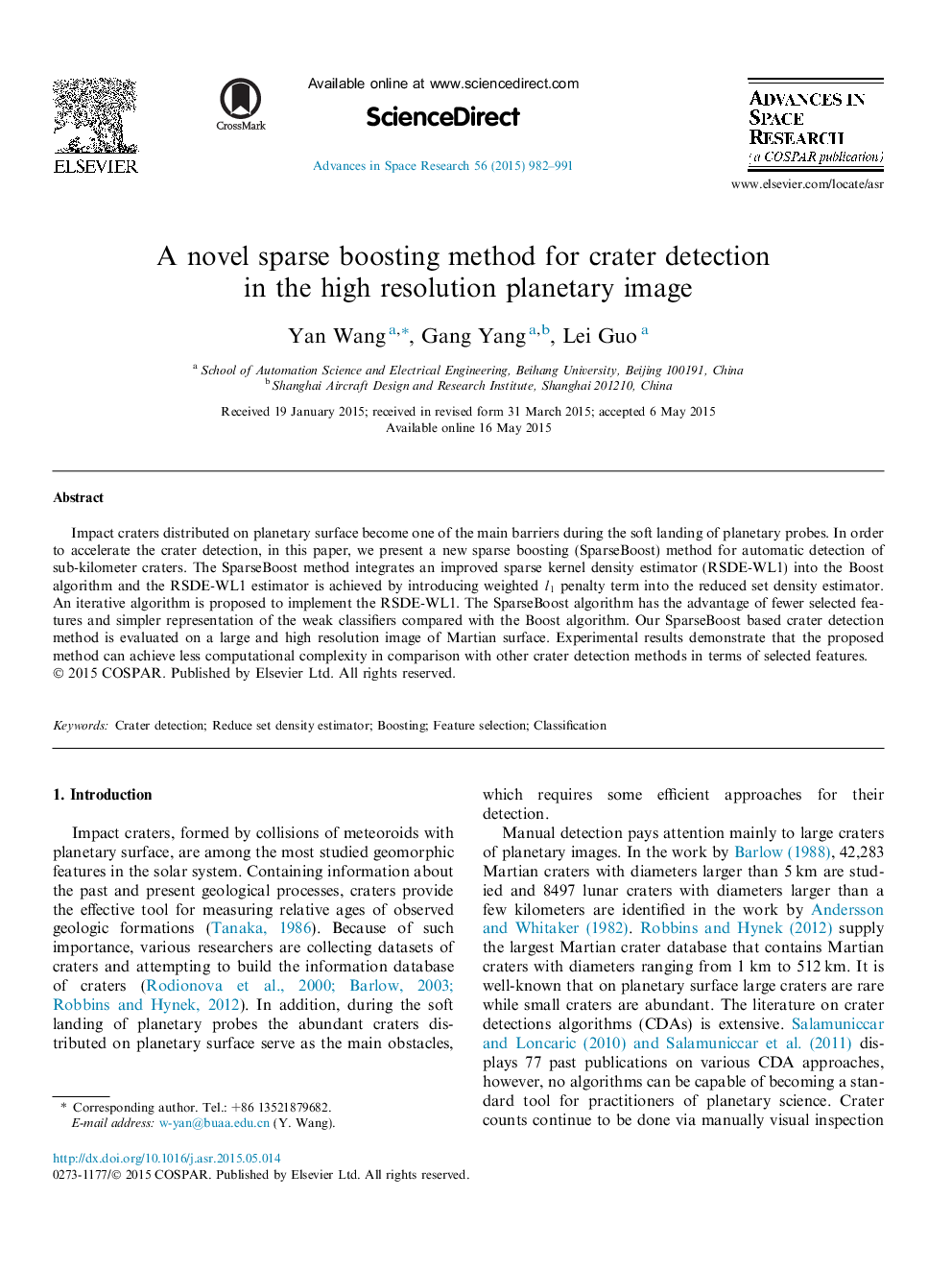| Article ID | Journal | Published Year | Pages | File Type |
|---|---|---|---|---|
| 1763832 | Advances in Space Research | 2015 | 10 Pages |
•The SparseBoost method integrates an improved sparse kernel density estimator into the Boost algorithm.•The RSDE-WL1 estimator is achieved by introducing weighted l1 penalty term.•An iterative algorithm is proposed to implement the RSDE-WL1 and the proper choice of parameters is discussed.
Impact craters distributed on planetary surface become one of the main barriers during the soft landing of planetary probes. In order to accelerate the crater detection, in this paper, we present a new sparse boosting (SparseBoost) method for automatic detection of sub-kilometer craters. The SparseBoost method integrates an improved sparse kernel density estimator (RSDE-WL1) into the Boost algorithm and the RSDE-WL1 estimator is achieved by introducing weighted l1l1 penalty term into the reduced set density estimator. An iterative algorithm is proposed to implement the RSDE-WL1. The SparseBoost algorithm has the advantage of fewer selected features and simpler representation of the weak classifiers compared with the Boost algorithm. Our SparseBoost based crater detection method is evaluated on a large and high resolution image of Martian surface. Experimental results demonstrate that the proposed method can achieve less computational complexity in comparison with other crater detection methods in terms of selected features.
